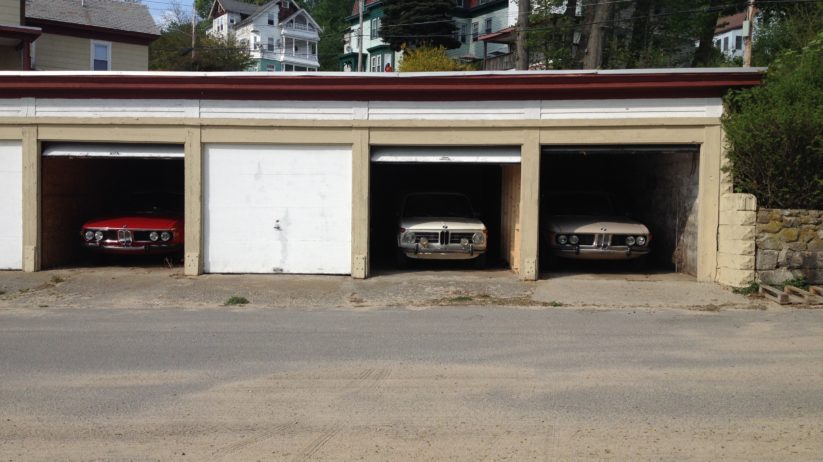Now that I’m back from the Vintage and the 2,000-mile chapter on my hijinks with Bertha is closed, I’m trying to engage with my other cars, free them from the storage areas in which they’ve been sitting since Thanksgiving, and enjoy them. If you could call what I have a “collection”—and I don’t—it is based around the three cars I think of as “the Nixon-Era Triplets.” I thought it might be fun to compare and contrast them—sort of like The Bachelor, but with actual passion.
1972 BMW 2002tii
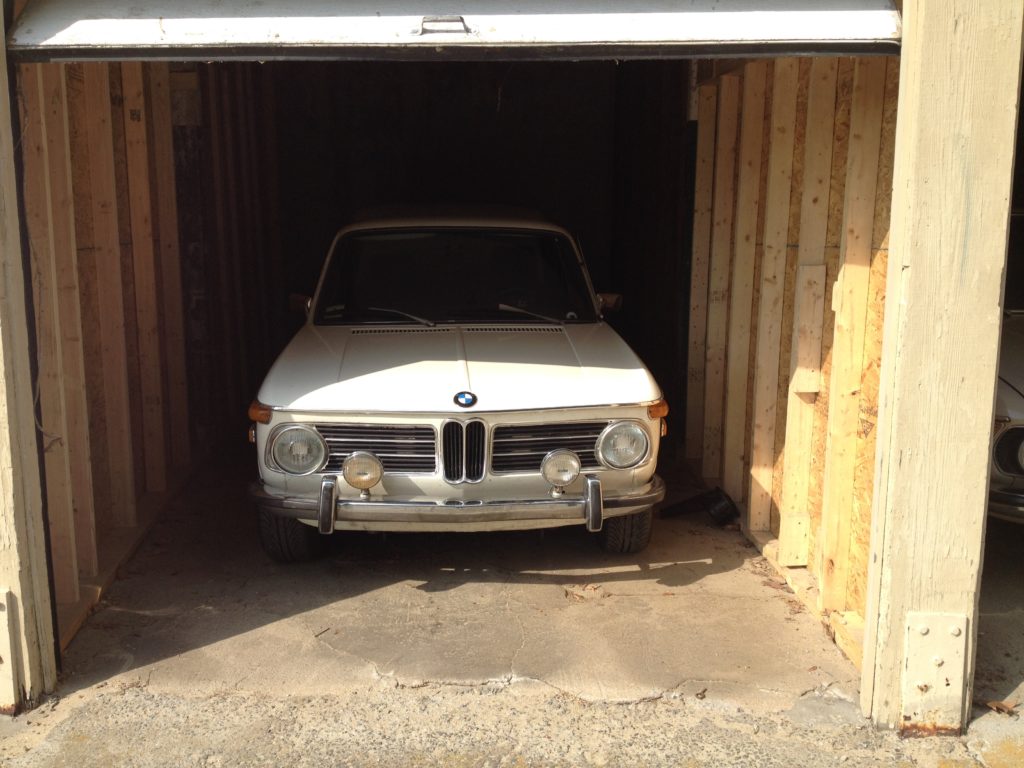
Kugel’s adorable face.
Many of us who are taken by a certain model have an origin story. Mine is that when we lived in Amherst, Massachusetts, in the early 1970s, a Hampshire College student who lived with us had a ’71 BMW 2002. He drove me all around the back roads of Amherst in that car, forever impressing on me what the boxy little German sedan could do. I bought my first one in Austin, Texas, in 1982, and have owned, at last count, 37 of them.
I don’t need to tell you that 2002s deserve every bit of their reputation. That boxy upright shape is iconic. The sparse functional German interior with its greenhouse of windows spoils you for other vintage cars. Bone-stock, they handle well and are a blast to drive, even more so with tweaking.
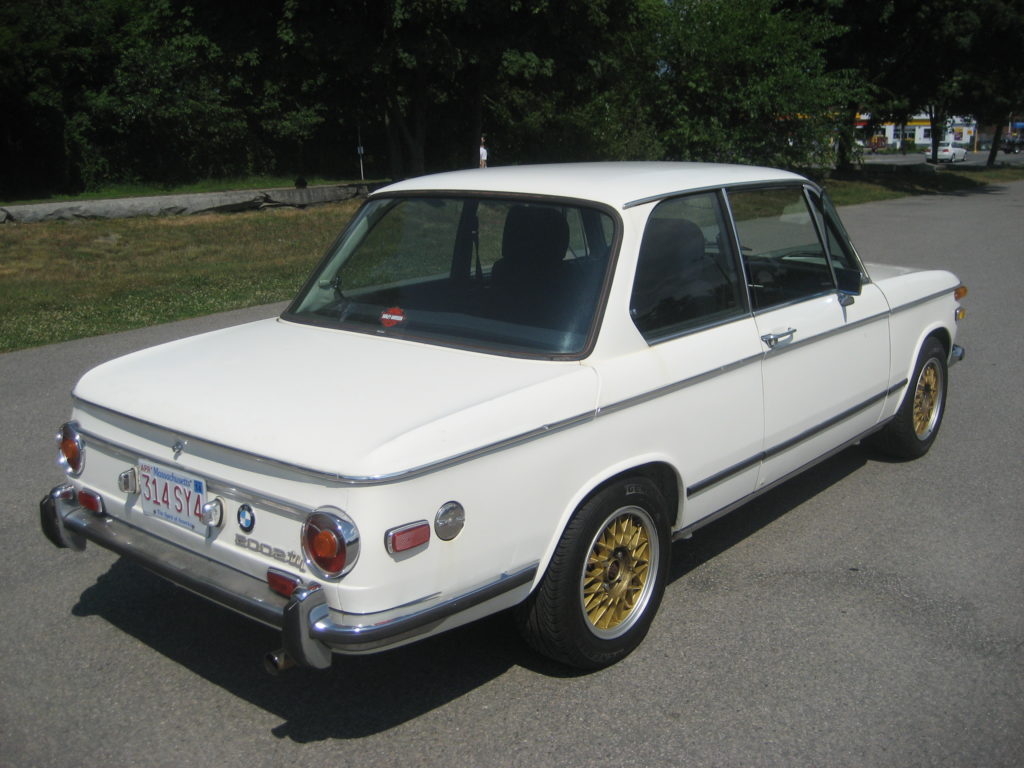
How can anyone not just love a round-taillight 2002?
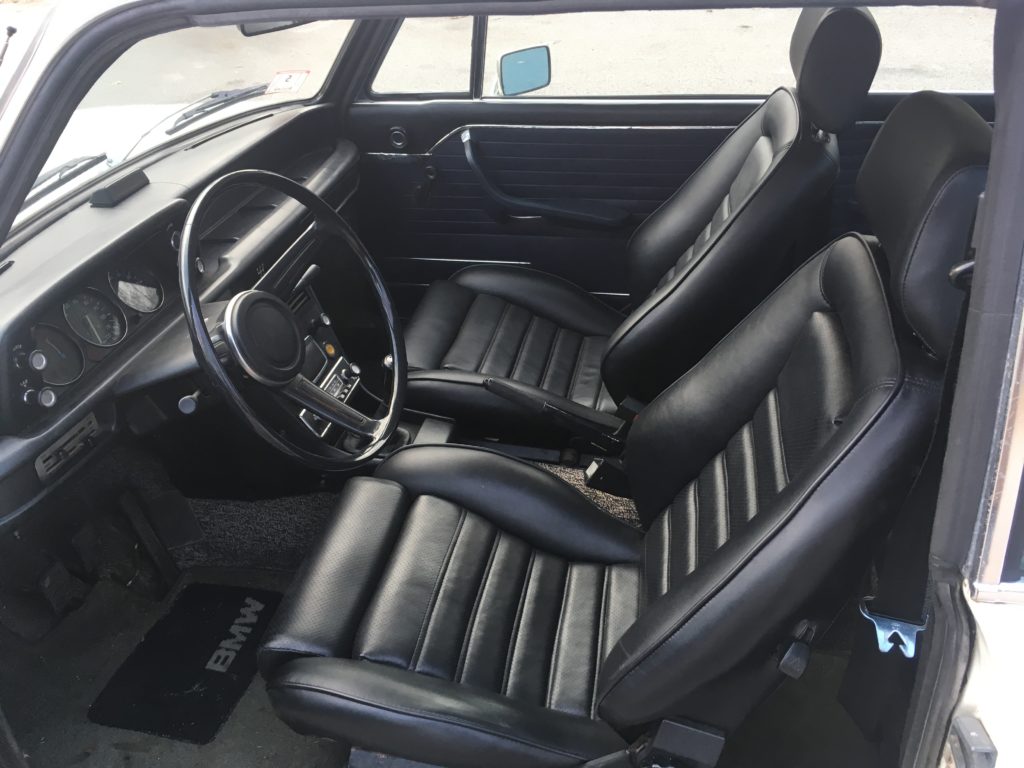
The quintessential German interior (with the addition of reupholstered 320i factory Recaros and AFM and oil pressure gauges)
I’m a big fan of the Kugelfischer mechanical injection in the tii. Once it’s set up, it’s trouble-free for years. The immediacy of the throttle response isn’t quite as good as a set of well-tuned side-draft Webers, but the windup is better. There are certain intangibles in certain cars, and the way the tii sings during acceleration and fast cruising, the sound and the feel of the engine through the rubber mounts, is one of them. It simply has a different feel than the carbureted 02 that’s not reflected in the minor differences between the performance stats.
I’ve owned this particular car (Kugel), a ’72 2002tii, for about eight years. As a ’72, it’s got what are commonly referred to as “pre-2½-mph bumpers.” The rear bumper is flush against the body; the front bumper comes out only as far as the nose as the car. In contrast, the ’73 bumpers, though still small and chrome, stick out a few inches farther; thus, the ’72 cars have a slightly more compact and tidy look.
This car lived in New Mexico for much of its life, so it is remarkably solid, though not 100% rust-free. It’s a well-sorted survivor car with some desirable modifications, including a five-speed, recently reupholstered factory Recaro seats from a 320i, and a resurrected a/c system that produces 32-degree vent temperatures.
Driving Experience
Having owned many 2002s, I find a comfort and a familiarity in driving Kugel. The updated 320i Recaro seats are perfect for support in the twisties and on long trips. The Bilstein HD shocks, big sway bars, slightly shorter springs, and 14-inch wheels firm up the ride, while not making it the least bit jarring. Plus, part of the fun of driving a 2002, particularly a pre-’74 one with those perky round taillights, is that BMW sold enough of them that the car is instantly recognizable to many people; 65-year-old women will come up to me in parking lots and say, “Oh, my boyfriend had one of these in graduate school! I loved that car!”
The main downside is that on long trips, the car is noisy. While the updated five-speed gearbox is great for knocking down the engine rpm on long highway runs, the wind noise seeping through the door seals is a bit fatiguing after 500 miles.
I have other 2002s. Bertha is a ratty, snotty go-cart, and Louie (also a ’72 tii) is more original, but Kugel is the one I’d jump into if I wanted to take a 2002 on a comfortable drama-free road trip and had little preparation time.
1973 BMW 3.0CSi
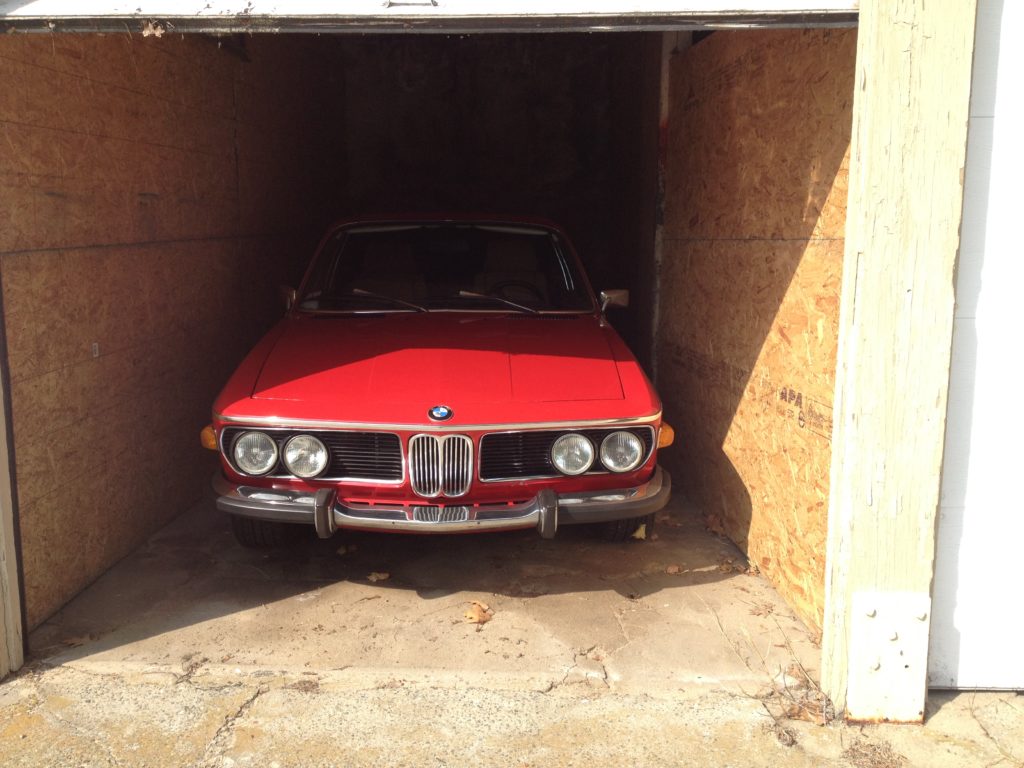
Everyone looks at this face when it enters a room.
When I lived in Austin during those primitive pre-Internet days, I’d find cars by driving slowly through neighborhoods and looking down people’s driveways. I’d already owned six 2002s when I came face-to-face with a 3.0CS. Suddenly, I thought, “Forget 2002s; I want one of these!” These are true pillarless coupes (no B-pillar), so when the windows are rolled down, there’s an unbroken opening that’s breathtaking. And the torque of that legendary M30 in-line six-cylinder engine spoils you and makes you never want to go back to a 2002.
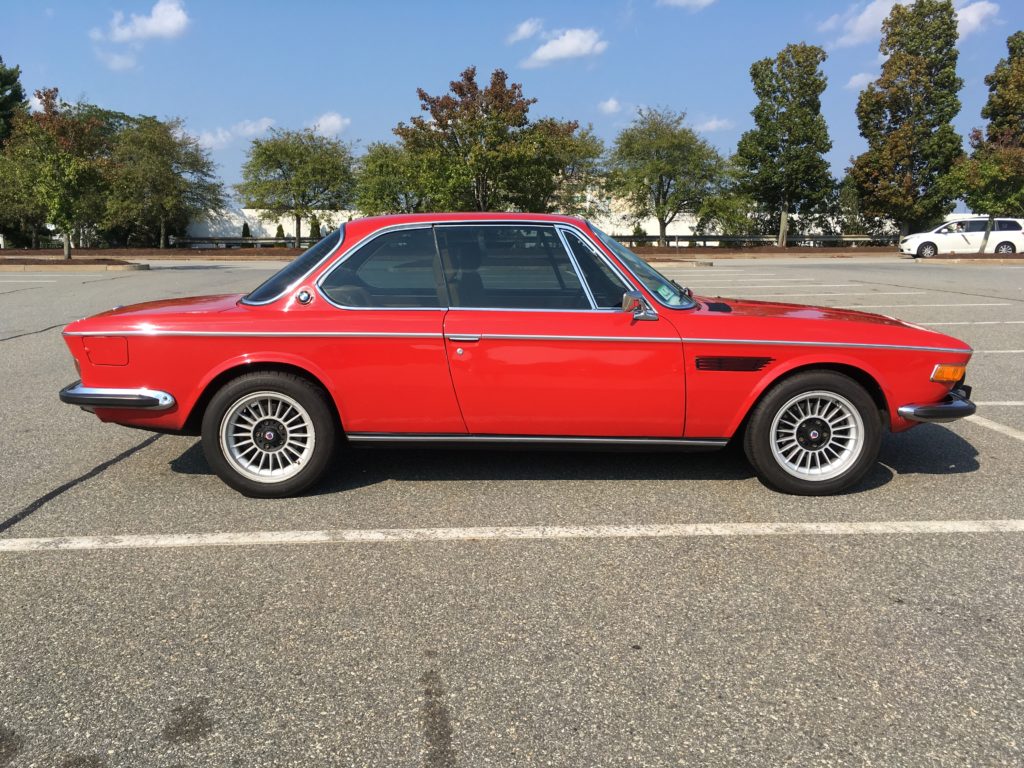
OF COURSE I love it. Wouldn’t anyone?
The E9 coupe began in 1968 as the 2800 CS, identical to the subsequent 3.0CS except for rear drum brakes and a slightly smaller engine. In the United States, we got the dual Zenith-carbureted 3.0CS from 1971 through ’74, nearly all of which were fully loaded with leather, power windows, and air-conditioning. But in Europe, you could also get the 3.0CSi, which had higher-compression pistons and a Bosch D-Jetronic injection system. The Euro cars tended to be less well appointed, with velour interiors and no a/c.
The problem with E9s is that, although they’re gorgeous, they have a Karmann-built body, and if you learn only one automotive joke, it shouldn’t be about Lucas electrical systems, it should be, “Karmann invented rust, then licensed the process to the Italians.” If 2002s wear their rust on their sleeves, E9s hide it away like a shame on the family. The fenders are lap-seamed to the corners of the windshield, making removal a major operation, and they need to be removed in order to address the rust that often forms up under the front shock towers and breaks through the firewall. What you think is a rocker panel is actually a long wide piece of trim, held in place by dozens of tiny screws, and hiding the true condition of the actual sheet metal underneath. A layer of so-called “elephant skin” in the trunk hides the condition of the rear shock towers, and taking it off for inspection risks shattering it. For these reasons, it’s difficult to correctly assess the body condition of an E9 coupe, and buying one is thus risky unless there are photos documenting a restoration.
My E9 began life as a wrecked but driving Polaris (silver) 3.0CSi with a blue velour interior. I bought it in 1986 when I was 28. I ordered the nose and fenders that it needed from a Roundel advertiser; I still have the receipt from The Illuminescence Group for $728 shipped. I paid someone to weld them on, and then drove the car, half Polaris and half primer, for two years while I saved money to paint it.
The cars weren’t worth then what they are now, and when I had the outer body restoration done, I color-changed it from Polaris to Signal Red. Because it was an un-federalized Italian-issue car, it never received the US-spec side-marker lights, giving it a clean Euro look. It’s been 30 years since it was painted, but I’ve been careful with the car, and the finish is still gorgeous.
When I bought the car, the D-Jet injection had already been removed, and the car was running a pair of Weber 32/36s. In the late 1980s, I happened into a dirt-cheap low-mileage motor from a 533i and a five-speed from a 528i. I installed them, still using the Webers. Over the next 30 years, I did many things to the car, including swapping the interior with a beige leather one from another car, updating the seats to Recaros, de-rattling the car, installing air-conditioning, and replacing the Webers with L-Jetronic injection that uses a traditional air-flow meter instead of D-Jetronic’s quirky pressure sensor. The car starts instantly and idles well in any weather, but it lacks a bit of the snap and growl of the carburetors.
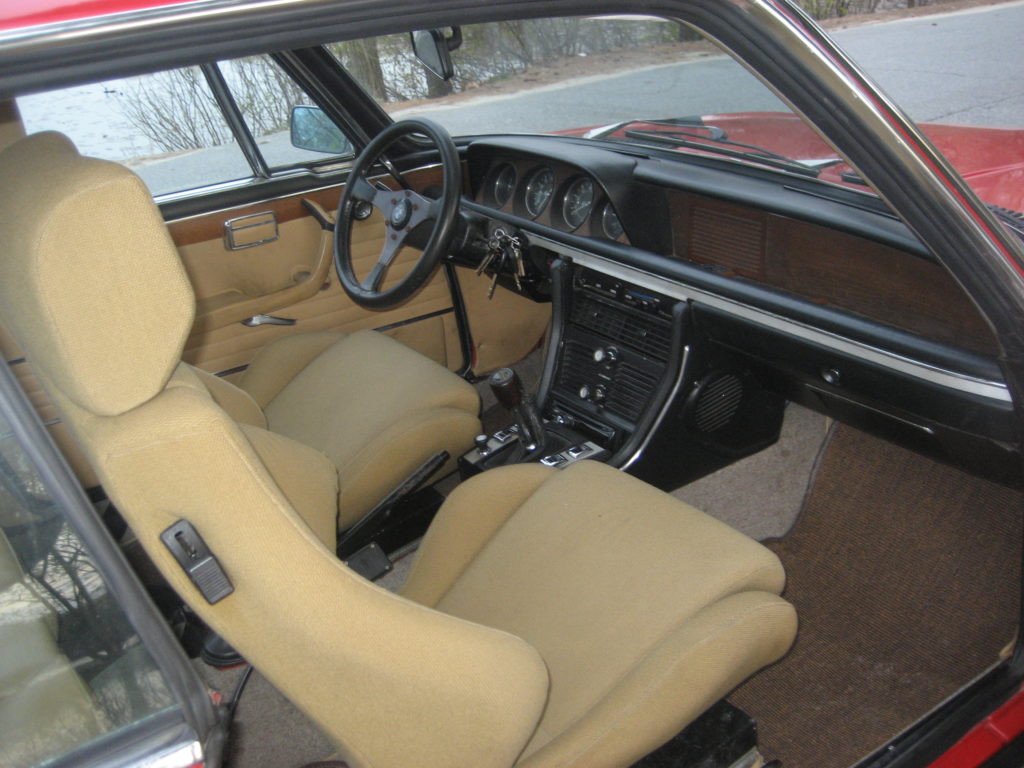
My 3.0CSi’s interior now has Recaro SE seats and a slightly smaller steering wheel.
Driving Experience
The red 3.0CSi’s shape is less recognizable than that of the 2002—most people simply see it as a cool old BMW without knowing what model it is—but because it is both red and gorgeous, it is almost literally traffic-stopping wherever I go, although I’m not accosted by 65-year-old women in Whole Foods parking lots the way I am with the 2002tii. Driving-wise, it’s a powerful elegant touring coupe, a very comfortable car for pounding out mileage.
This one, like the 2002, is set up with Bilstein HD shocks and big sway bars. About eight years ago, I cut the springs by one coil to settle the car down on its Alpina 16-inch open-lug wheels. So if I want to lean it into corners, I certainly can, and it does just fine, but it doesn’t beckon me to do so as the 2002 does. And because the car is a pillarless coupe, wind noise is even worse than in the 2002. Even with adjustment, it’s nearly impossible to get the front window to seal against the strip of rubber on the rear quarter window.
Plus—and I’m ashamed to admit this—the value of the car is now high enough that I’m a little nervous taking it out. I’m afraid of getting rear-ended in traffic by someone on their phone. I’m afraid of stone chips. I’m afraid of rain. This is all justified, by the way, as the car caught a clevis pin that flew off the back of a truck in rainy traffic during the Great Drenching Event of 2013 (driving to the Vintage through 500 miles of unremitting rain).
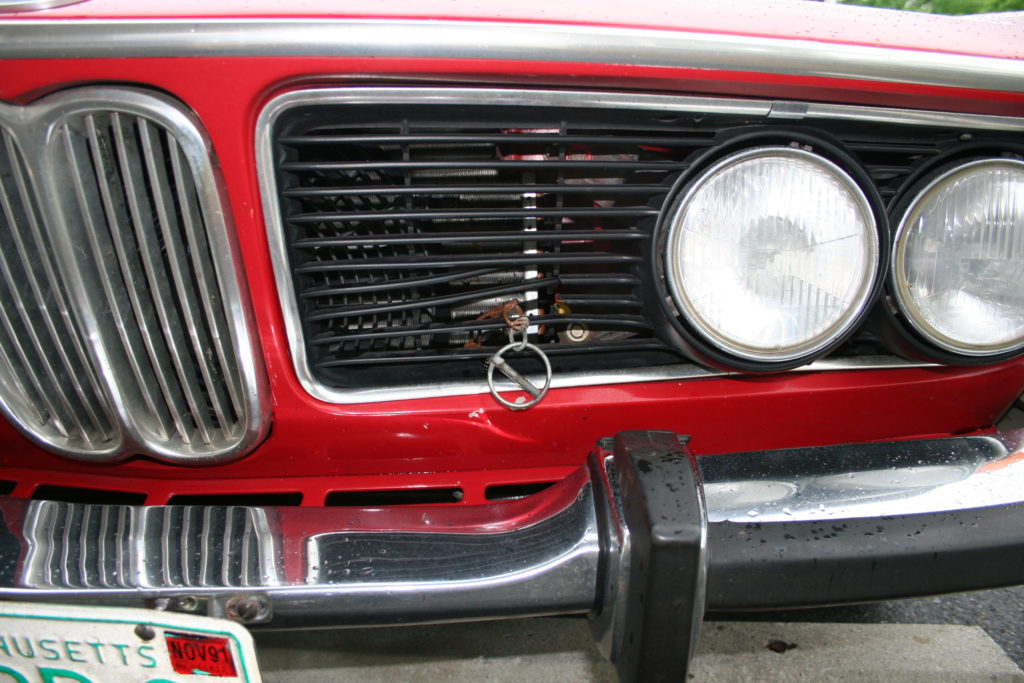
The legendary clevis-pin-through-the-face incident. See if you don’t get shy about driving your baby after this happens to you.
A few years ago, after the Great Drenching Event of 2013, I wrote a piece about using cars versus using them up, and discussed the issue of “moisture allocation” on a look-at-it-with-a-wet-thought-and-it-rusts car like an E9. I felt, properly, that on that one trip, I’d used up my entire lifetime of moisture allocation for that car. This made me very hesitant to continue to road-trip the car unless I can see a totally clear weather forecast, and you basically can’t ever do that with certainty for a five-day trip.
But I also concluded that when I die, there should be one single rust blister on the E9 the size of a dime. Any more rust and I would’ve felt like I’d been careless with the car; any less and I wouldn’t have used the car enough. Currently, there’s less; the car is still 99-and-44/100-percent rust free.
I’m trying to calibrate my use of the E9 to better balance enjoyment and anxiety. But hopping in it, pulling it out of storage, and exercising it, there’s nothing but love, love, love. I still pinch myself that I own this car.
1972 BMW Bavaria
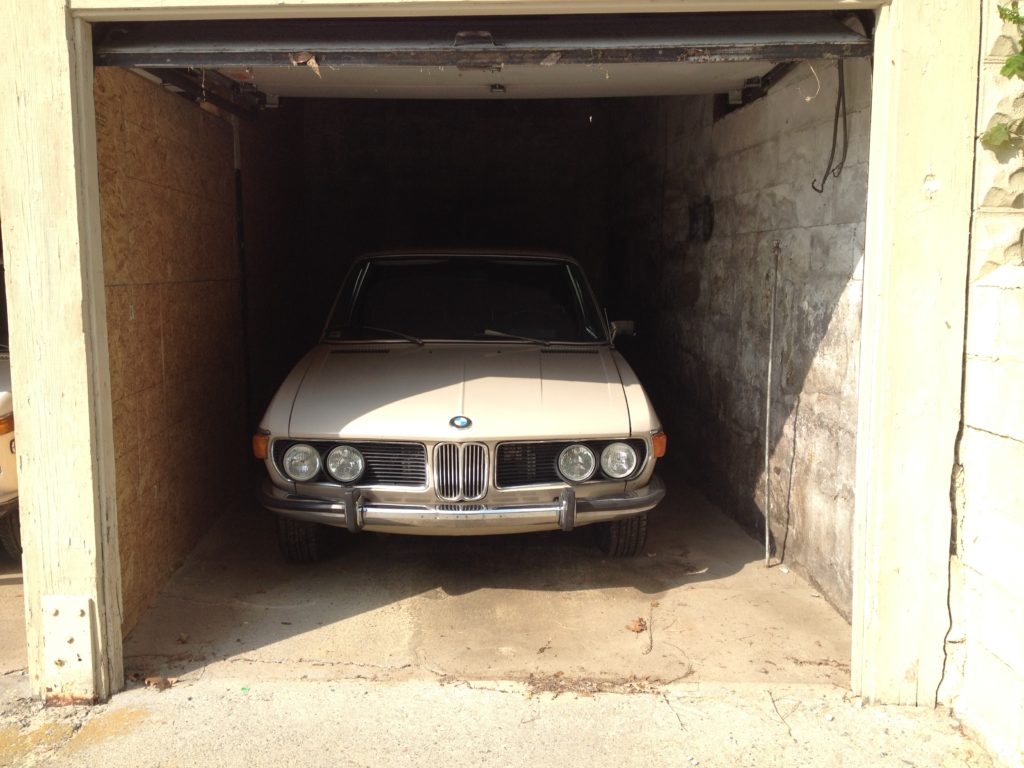
The Bavaria: The light-colored dark horse of the bunch.
Most of you probably know the story of the Bavaria, the predecessor of the 7 Series available from 1968 through ’77. BMW’s body code for the big four-door is E3, but the car was badged with several names. It began life as the 2500, then 2800 as the engine displacement increased. Most of them were sticks, so they were viewed as a driver’s alternative to a Mercedes, but due to the high price and lack of a following, they didn’t sell well. BMW importer Max Hoffman bundled a number of options such as a/c and vinyl interior together and marketed the car as the Bavaria, which is the name by which most people in the United States know it (and is the only non-numeric name BMW has ever used). There were both 2.8L and 3.0L Bavarias. BMW then went back to the numeric badging and à la carte optioning, and produced the 3.0S and 3.0Si (injected) sedans.
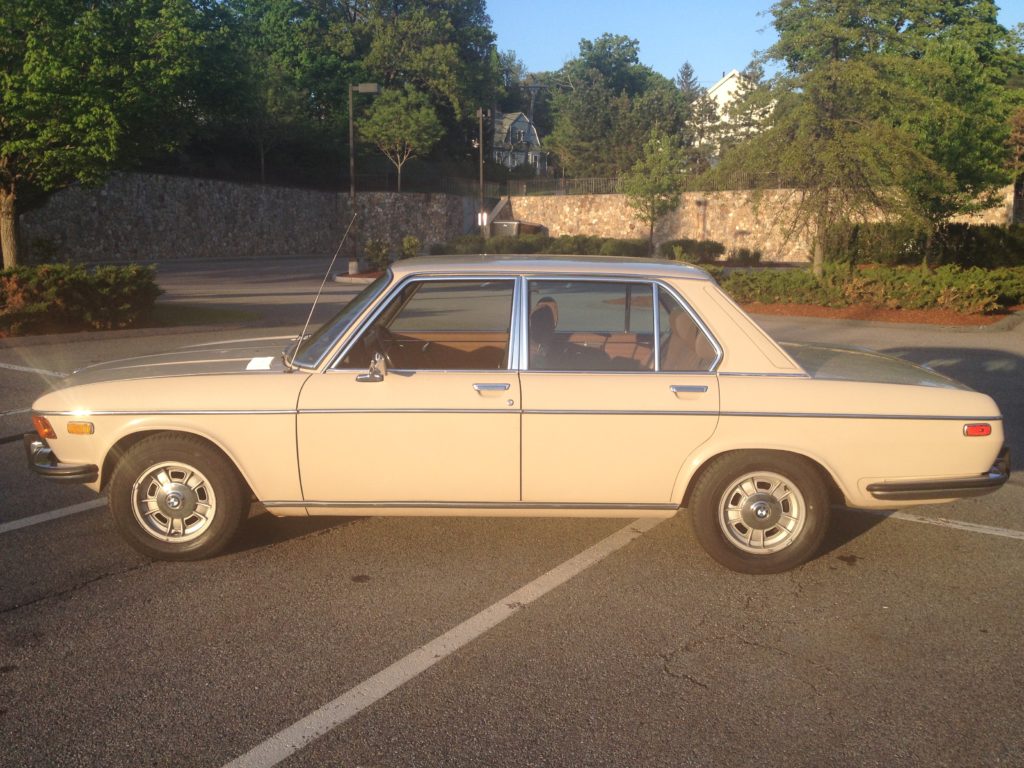
My ’73 Bavaria. I love this big old boat.
My friend Scott Aaron says that the Bavaria was the perfect car if you were a college professor with a family in the 1970s, but that you need to own a tweed sport coat with leather elbow patches to drive it. There’s actually a lot of truth to that.
Mechanically, a Bavaria is nearly identical to the E9 coupe. It’s got the same silky/torquey M30 engine. Front suspension and steering are the same, rear suspension is a similar semi-trailing-arm design. Interestingly, though, the dashboard feels one generation newer. There are two reasons for this; the first is the dash itself. Everyone loves the E9’s wood dash, and it is gorgeous, but it’s fussy. The wood is just a veneer, and it cracks and peels easily with sun exposure. Although the Bavaria lacks the E9’s wood dash, it has a wood accent strip. Your eye almost doesn’t perceive it as wood, but it’s remarkably effective as an accent piece, breaking up what would otherwise be a monolithic black dash.
The second is the instrument cluster. While the E9 still has the individual pod-style gauges with the little silver centers, the Bavaria has a more modern design where all the gauges are together behind a single Plexiglas pane. Together, the dash and gauge cluster feel like they would be at home in any BMW from 1968 through the mid-1990s.
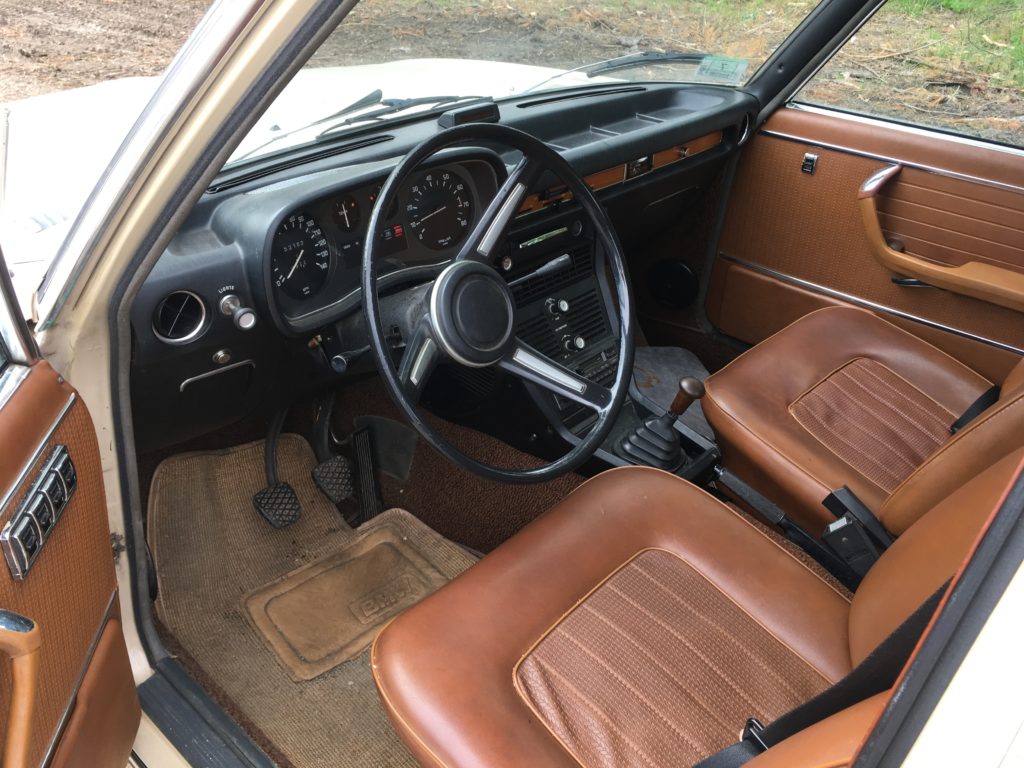
The Bavaria’s timeless and functional German interior.
For many years, Bavarias were worth almost nothing, as the big four-door wasn’t perceived as being sporty or tossable enough for many 2002 people, and lacked the lines of the lithe and gorgeous E9 coupe. Now they’re starting to get their due, as folks are finding that they can get a similar vintage BMW experience as an E9 for ¼ the cost or less. E3s rust similarly to 2002s, but not quite as badly as E9s. However, because so many were ignored for decades, it’s difficult to find a rust-free one. Nice-looking examples have sold during the past year on Bring a Trailer for about eight grand.
Mine was brought back from California in the early 1990s by an enthusiast in New Hampshire. He took the car to regional shows, then he passed away and the car went into storage. It was bought by another enthusiast about five years ago as part of the settlement of the estate. He began sorting out the car, and sold it to me mid-project. When I examined it and found that it was indeed rust-free except for some minor surface oxidation on the floor pans (e.g., no holes), and when it was offered to me for four grand, I bought it on the spot. Although the exterior is Sahara, which is not a love-it color for me, that gets you the saddle interior, which I adore.
Most of my other vintage BMWs have some interior modifications—Recaro seats, smaller steering wheels, air/fuel gauges, etc. In contrast, my Bavaria’s interior is absolutely bone-stock, complete with the big “bus wheel” and the horsehair-stuffed pleated front seats. It’s a time capsule that’s perfect the way it is.
Driving Impressions
Of these three cars, the Bavaria is actually the most fun to drive, however stunning that may seem. Although the car is only an inch and a half longer than the E9 coupe, when I bought the car, the stock suspension made the car feel big, floaty, and boaty, with an almost comical amount of body roll. Like both of the other cars, I installed Bilstein HDs and big sway bars in it. However, I left the springs, wheels, and tires stock. This combination gives it a very comfortable and forgiving ride, but also makes it so it doesn’t lean ridiculously around corners. I don’t live to toss it into entrance ramps, but it’s a hoot when you try.
The combination of the M30 engine and the dual Weber 32/36s takes a little while to warm up (one of the chokes is sticking), but once it’s there, the combination of the mechanical sound of the engine and the feel of the grunt is ridiculously intoxicating. Both the passenger and trunk space are cavernous. And because it has framed windows (unlike the other two cars), it’s much quieter at highway speeds than the other two cars. It’s still got the stock four-speed, but it’s plenty tall enough, turning perhaps a little under 4,000 rpm at 80 mph. And because the car’s value is probably less than ten grand, I’m not afraid of driving it; it’s been back and forth to the Vintage twice. I’m not a nervous Nellie in traffic or when the skies open up the way I am in the E9.
The only downside is that because of the bone-stock interior, the original German horsehair-padded seats don’t have enough support for long trips, but a Tempur-Pedic back pillow solves that problem.
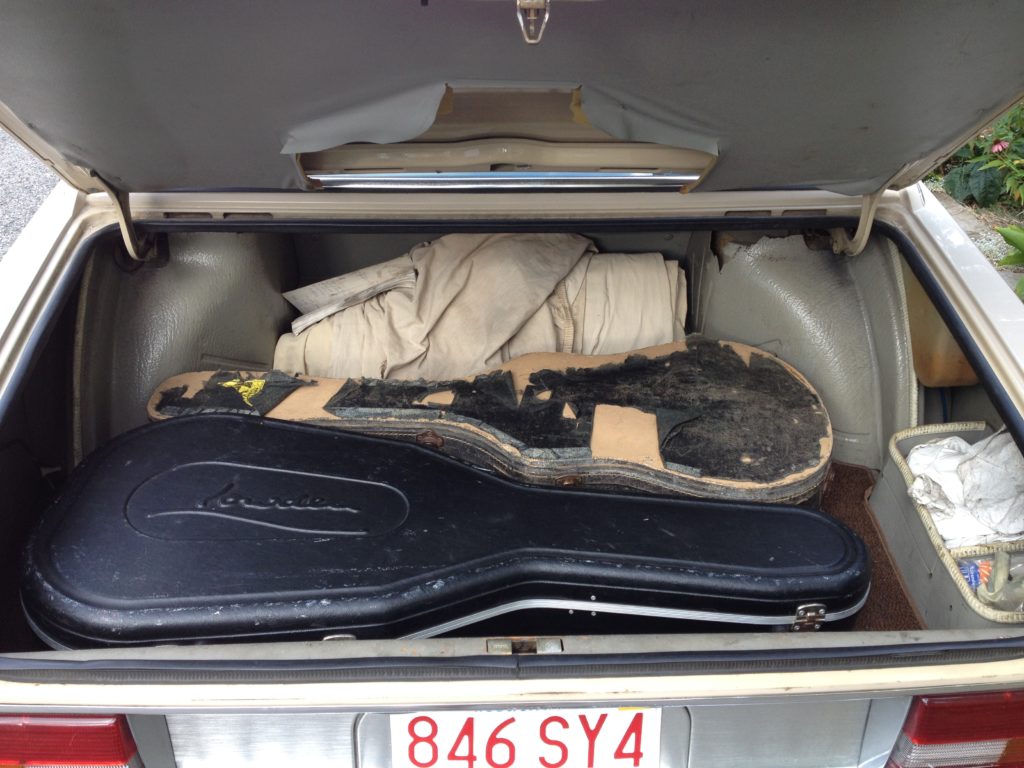
Not kidding about the Bavaria’s cavernous trunk. Yes, that’s two guitars with room to spare.
Of course, the beauty is that I already own all three of these cars, so I don’t have to pick just one. And to be clear, the “most fun to drive” doesn’t mean the one I love the most or have kept the longest. I’ve owned the 3.0CSi 33 years. It’s the queen of the roost. It’s the car that’ll be here after the creditors have knocked the doors down.
But if you’re considering adopting one of the Nixon-era triplets, and if both 2002s and E9s have gotten too rich for your blood, you might look at a Bavaria. Finding a rust-free one is the tough part.
Then go to a good thrift store and pick yourself out a tweed jacket. It may be just as tough to find one without worn-out elbow patches.—Rob Siegel
Rob’s new book, Just Needs a Recharge: The Hack MechanicTM Guide to Vintage Air Conditioning, is available here on Amazon. His previous book Ran When Parked is available here. Or you can order personally inscribed copies of all of his books through Rob’s website: www.robsiegel.com.

